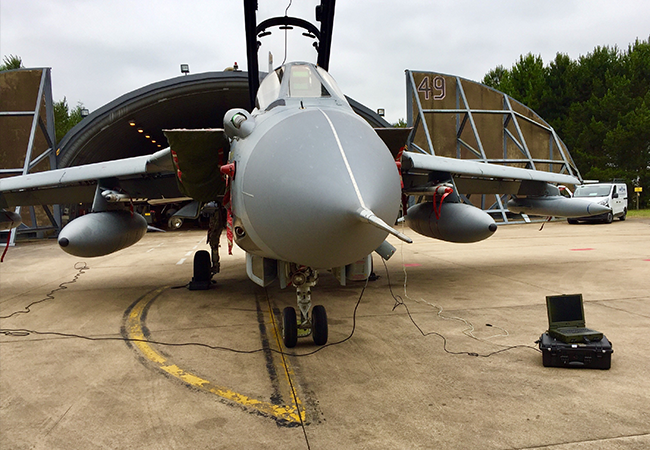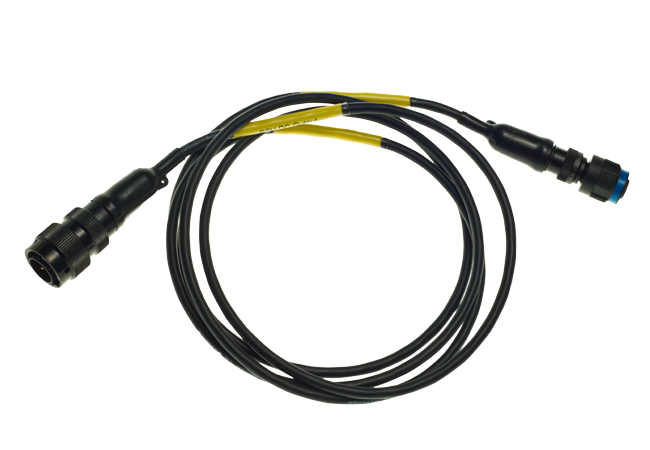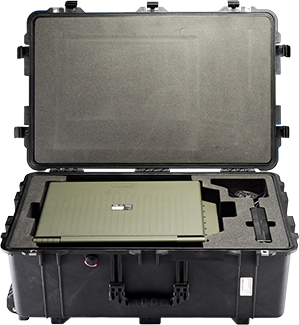MIL-STD-1553 has been a key data bus standard for avionics and wider applications for nearly 50 years, and its use has increased across various platforms and domains over this time. Its many advantages, including high-reliability and widespread deployment globally, means that it is still a highly regarded standard that will be used well into the future. In this blog, we explore what MIL-STD-1553 is and how GRiD’s products leverage this popular standard.
Moving electronic data around is a much simpler process when interfaces align and systems are compatible with each other. Strict standards are put in place to ensure that this remains the case, reducing the possibility of unnecessarily complex or proprietary systems that do not promote interoperability, efficiencies or reliability.
Working to set industry standards provides a wealth of benefits to customers and end users, reducing the need for bespoke systems and expensive equipment that a supplier dictates. In the commercial electronics space, we have witnessed this with the standardisation of universal serial bus (USB), and the significant reduction in the types of charging and data transfer cables now required by consumers.
This has been particularly notable for mobile devices, but what if we wanted to standardise the data bus interfaces and systems that underpin a platform’s systems? We have what’s known as MIL-STD-1553.

How was MIL-STD-1553 developed?
MIL-STD-1553 was borne out of the growing complexity of military aircraft and particularly their avionics systems and sub-systems.
Up until the 1970s, aircraft systems had traditionally relied on point-to-point wiring, which meant that a system could communicate with only one other system (known as simplex communication). This was becoming increasingly expensive and bulky as aircraft were integrating more electronic systems and sub-systems.
To address this challenge, a multiplex data bus standard was developed that would allow a number of systems to be connected through a single bus (or communications channel), negating the need for heavy cabling. This would eventually become MIL-STD-1553 with the US Air Force’s (USAF) adoption of the standard in 1973.
As well as reducing weight, MIL-STD-1553 had other advantages including greater system redundancy, high reliability and improved interoperability.
Some of the first aircraft that the standard was used on included the USAF’s F-16 fighter and the US Army’s AH-64 Apache attack helicopter, but the success of MIL-STD-1553 in the airborne domain meant that many more platforms began to leverage the standard, even spacecraft such as the James Webb Space Telescope.
Later changes to MIL-STD-1553 removed reference to aircraft and avionics, owing to its wider use on other platforms.

How MIL-STD-1553 works
MIL-STD-1553 is a US Department of Defense (DoD) mil-spec standard that “establishes requirements for digital, command/response, time division multiplexing (data bus) techniques”, according to the Pentagon’s official document. The full MIL-STD-1553 standard .pdf is available here.
But what exactly does this mean? Let’s break it down:
- Digital: Information is processed and transmitted using binary code (1s and 0s).
- Command/response: Communication is controlled by a central device that sends commands to other devices.
- Time division: A communication channel is divided into specific time slots, with each device assigned specific slots to send or receive data.
- Multiplexing: Multiple signals or data streams can be sent over a single comms channel.
MIL-STD-1553 covers the mechanical, electrical and functional aspects of the bus, and also defines the three types of terminal devices that are allowed on the bus, which are:
- Bus controller (BC): The BC transmits, receives and coordinates the transfer of information on the data bus – its main function is to provide flow control for all transmissions on the bus. A BC issues a command to an RT (see below), which will respond, removing the risk of simultaneous transmissions.
- Remote terminal (RT): The RT is a device designed to interface subsystems with the 1553 data bus. The RT – up to 31 of which can be connected to the data bus – will receive and decode commands from the BC.
- Bus monitor (BM): A passive device that collects data for real-time analysis or post analysis and is critical for instrumentation and data bus testing.
This architecture allows for scalability, where new systems can be added without significant changes, and new technologies can be inserted that adhere to MIL-STD-1553.
In addition, the standard MIL-STD-1553B defines specifications for terminal device operation and coupling, word structure and format, messaging protocol and electrical characteristics, according to German company – and 1553 experts – AIM.
Is MIL-STD-1553 still used?
Despite the standard dating back nearly 50 years, it is still used across a wide range of aircraft across the globe as well as on other non-aviation systems.
While the transmission bit rate on the bus, as dictated by MIL-STD-1553, is just 1 mb/s, this is still considered to be extremely reliable for many critical applications, especially with a low error rate of 1 word fault per 10 million words (in the context of MIL-STD-1553, ‘words’ are units of data).
MIL-STD-1553-compliant data buses are still used on a number of modern combat aircraft such as the Eurofighter Typhoon, as well as the weapon stores it carries.
Another area where MIL-STD-1553 is utilised is in space, both for platforms as well as payloads. A notable example is the International Space Station (ISS), as well as rockets such as the European Space Agency’s Ariane 5 and satellites including the European satellite navigation constellation Galileo.
While other technologies are gradually being introduced, it is likely that MIL-STD-1553 will be used for many years to come.

How do GRiD computers support MIL-STD-1553?
GRiD can provide a fully-qualified, integrated data bus testing computer for MIL-STD-1553. This is a fully-rugged single-box solution that interfaces directly with platforms that have MIL-STD-1553 data buses.
With MIL-STD-1553 modules installed in the computer itself, GRiD’s specialist rugged laptops and tablets can be plugged directly into the platform’s data bus and used as standalone test equipment. This is capable of interrogating systems and highlighting any errors.
For air forces, this allows maintenance crews to perform pre-flight check-out and monitoring of entire avionics systems – even in austere environments – thanks to GRiD’s excellence in ruggedisation.
This configuration does not require any additional boxes or hardware elements, which has a myriad of benefits for end users.
GRiD is also a specialist in MIL-STD-1553 cables and connectors, easing integration for end users and ensuring the correct hardware interfaces are used. GRiD’s laptops and tablets can incorporate multiple 1553 channels, allowing for multiple data streams from 1553 buses if the customer requires it.
Find out more about our partnership with 1553 experts AIM in our case study here: AIM – a designer and manufacturer of high performance test and simulation modules – sought military-specification rugged computers that would integrate its data bus test modules for military avionics testing.

Drop an email to sales@griduk.com if you want to learn more.

